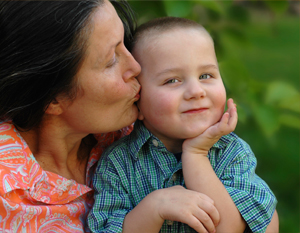A Kiss is Just a Kiss
 Or is it? What makes things the same and what makes them different? When I say “a kiss” or “she kissed me,” certain images are conjured up. What is conjured, however, may vary hugely. A kiss given by a grandparent to grandchild is quite different from the torrid kiss depicted in a romantic love story at the movies. They are both kisses, but the contexts and circumstances are so different as to beg the question of whether the same label really applies to both.
Or is it? What makes things the same and what makes them different? When I say “a kiss” or “she kissed me,” certain images are conjured up. What is conjured, however, may vary hugely. A kiss given by a grandparent to grandchild is quite different from the torrid kiss depicted in a romantic love story at the movies. They are both kisses, but the contexts and circumstances are so different as to beg the question of whether the same label really applies to both.
The kiss illustrates a general issue for those of us concerned with human behavior. Namely, it is always a mistake  to consider the form or topography of behavior in the absence of considering the circumstances surrounding the response. The circumstances are everything. Fibbing by a child to avoid punishment is very different from a child telling that same fib to save his brother from retribution by the class bully. Unless we know the historical and/or current circumstances and the potential consequences of the response, it is difficult to impossible to know how to handle the situation. If an accident at work occurs because a worker was negligent it calls for different remediation than if the accident occurred because of equipment failure or a manufacturing flaw in the product or material that was the source of the accident.
to consider the form or topography of behavior in the absence of considering the circumstances surrounding the response. The circumstances are everything. Fibbing by a child to avoid punishment is very different from a child telling that same fib to save his brother from retribution by the class bully. Unless we know the historical and/or current circumstances and the potential consequences of the response, it is difficult to impossible to know how to handle the situation. If an accident at work occurs because a worker was negligent it calls for different remediation than if the accident occurred because of equipment failure or a manufacturing flaw in the product or material that was the source of the accident.
Given these differences, it always is surprising when people consider only the form or topography in trying to determine how to manage the behavior. Attempts to manage behavior at a topographical level seem doomed to failure. It becomes a matter of “one solution for all problems,” which just can’t work out satisfactorily for either the changee or the changer.
 It is one thing if the antecedent to drinking a beverage is thirst, but quite another if it is a long history of alcoholism. The literal drinking responses are similar at a topographical level: one picks up the glass, raises it to the lips, tips the glass upward allowing the liquid to flow into the mouth, and swallows. But, in the first case, there is little need to change the behavior, it is both appropriate and physiologically useful. In the second, however, there may be great value to both the individual and to society by attempting to change the drinking response. In this, case, however, it isn’t just the response that is being changed. It is a whole cluster of events that precede and follow the topographical response of drinking. The response is considered not as an isolated topography or form, but as the end result of a set of circumstances that lead to a response that has other consequences, both short and long term. This so-called functional approach to understanding response forms seems far more productive in bringing about change than does an approach based simply on a particular form of behavior more or less isolated from its antecedents and consequences.
It is one thing if the antecedent to drinking a beverage is thirst, but quite another if it is a long history of alcoholism. The literal drinking responses are similar at a topographical level: one picks up the glass, raises it to the lips, tips the glass upward allowing the liquid to flow into the mouth, and swallows. But, in the first case, there is little need to change the behavior, it is both appropriate and physiologically useful. In the second, however, there may be great value to both the individual and to society by attempting to change the drinking response. In this, case, however, it isn’t just the response that is being changed. It is a whole cluster of events that precede and follow the topographical response of drinking. The response is considered not as an isolated topography or form, but as the end result of a set of circumstances that lead to a response that has other consequences, both short and long term. This so-called functional approach to understanding response forms seems far more productive in bringing about change than does an approach based simply on a particular form of behavior more or less isolated from its antecedents and consequences.



